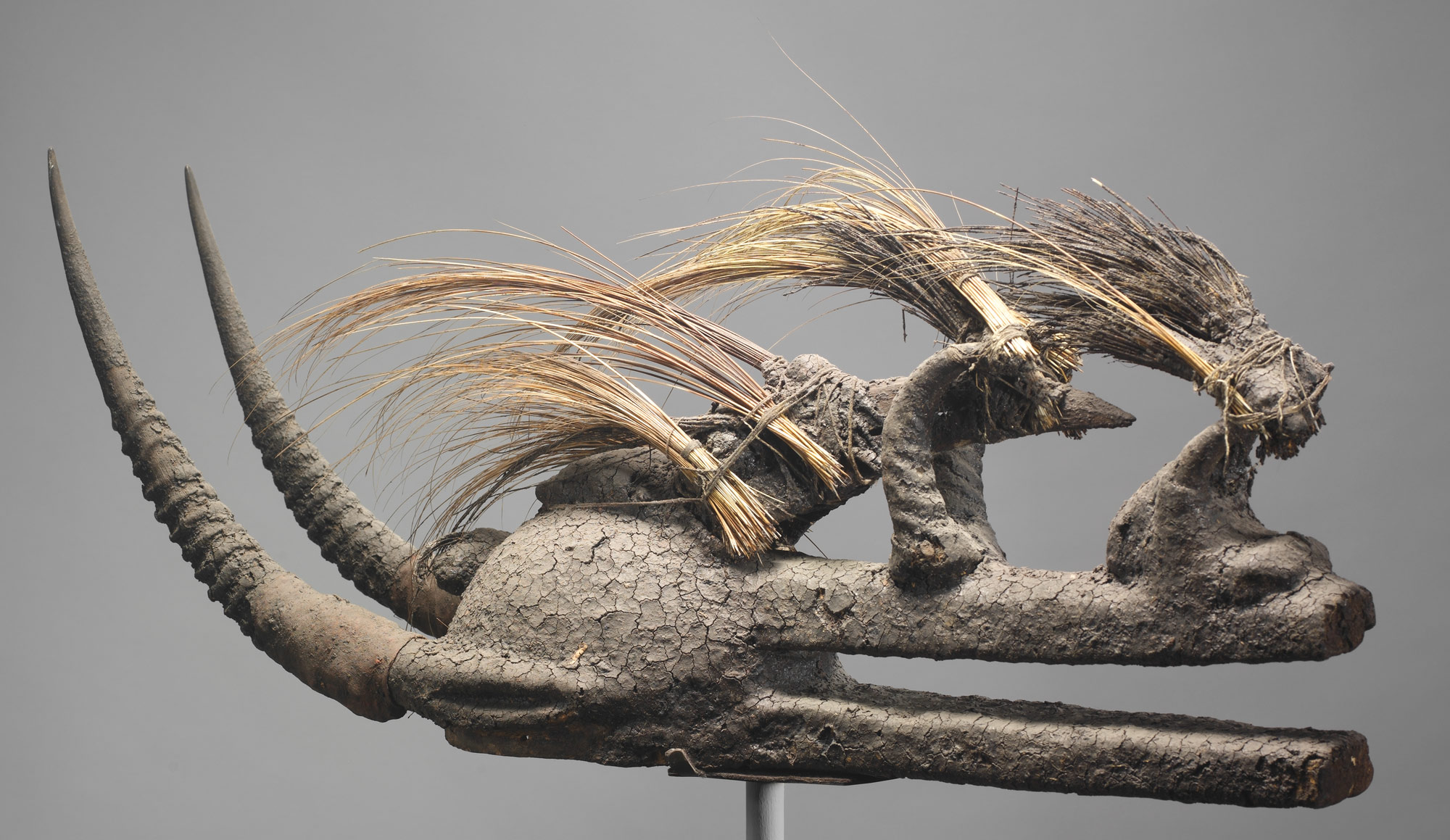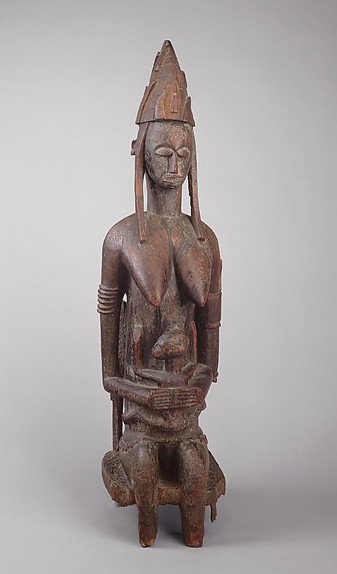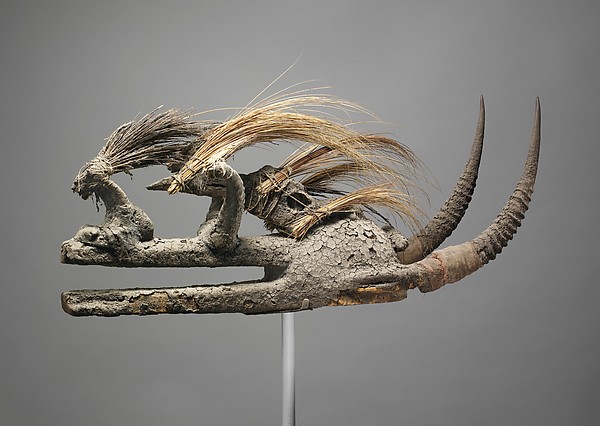
Kòmò Helmet Mask (Kòmòkun), 19th–mid-20th century, Guinea or Mali or Burkina Faso or Côte d’Ivoire, West Africa, Komo or Koma Power Association, Wood, bird skull, porcupine quills, horns, cotton, sacrificial materials, 35.2 x 22.1 x 85.6 cm (The Metropolitan Museum of Art)

Mother and Child, 15th-20th century, Mali, Bougouni or Dioila region, Bamana peoples, wood, 123.5 x 36.6 x 36.5 cm (The Metropolitan Museum of Art)
This headdress (above) was made and used by a member of the Komo society, an association of blacksmiths found among the Bamana and other Mande-speaking communities in the region. Komo association members enforce community laws, make judicial decisions, and offer protection from illness, misfortune, and malevolent forces. The headdress embodies the secret knowledge and awesome power of the society; its rough and unattractive form is therefore intended to be visually intimidating. While works like the Bamana maternity figure (left) depict a human ideal, this headdress is explicitly about harnessing the forces of untamed nature, a concept expressed visually in its form and material.
The wooden structure of the headdress has a domed head, gaping mouth, and long horns. Attached are antelope horns, a bird skull with a sharp beak, and porcupine quills, elements chosen for their metaphorical associations since they provide animals with power and protection. The animals themselves hold symbolic value in Bamana culture. Birds, for example, are associated with wisdom and divinatory powers, while porcupines signify the importance of preserving knowledge. The mask was further enhanced by the application of ritual substances formed from a mixture of earth, sacrificial animal blood, and medicinal plants. This material was replenished on a regular basis, endowing the mask with the critical life force, or nyama, that is the source of its extraordinary power.

Alternate view, Kòmò Helmet Mask (Kòmòkun), 19th–mid-20th century, Guinea or Mali or Burkina Faso or Côte d’Ivoire, West Africa, Komo or Koma Power Association, Wood, bird skull, porcupine quills, horns, cotton, sacrificial materials, 35.2 x 22.1 x 85.6 cm (The Metropolitan Museum of Art)
Komo society headdresses are made by blacksmiths, a specialized artisan group among the Bamana whose profession is inherited. Blacksmiths are greatly respected within their community for the special knowledge and technical skills that allow them to use fire, water, and air to transform iron ore into tools and weapons. Ironworking is considered an especially dangerous profession, one that requires courage and extraordinary abilities to manage the potentially destructive spiritual forces released during the process. Blacksmiths are therefore uniquely qualified to create Komo headdresses, which combine terrifying forms and inherently harmful materials in an object of benefit to the community.
The headdress is worn in dramatic performances that serve as a focal point of Komo society meetings. Held in private and restricted to initiated members, these meetings provide an opportunity to gain an understanding of the society’s history, beliefs, and rituals. Accompanied by bards and musicians, a high-ranking Komo member appears wearing a headdress like this strapped on the top of his head. His face is covered with a semitransparent cloth and he wears a costume of black feathers enhanced with amulets over a hooped skirt. The dancer’s performance is acrobatic and intense, featuring spectacular feats that suggest extraordinary powers. His performance responds to petitions for assistance from members of the community. Through song and dance, the Komo member gradually reveals solutions to a variety of concerns that have been presented to him, from crop failure to infertility.
Considered the most powerful of men’s associations in the region, Komo has an ancient history and was well established by the time the Mali empire rose to power in the thirteenth century. Individual community branches of Komo, which are distributed widely across the region, gain authority through strong leadership, coalitions with wilderness spirits, and effective use of power objects.
© 2006 The Metropolitan Museum of Art, New York (by permission)
Additional resources:

